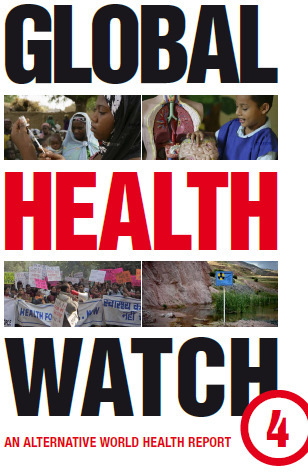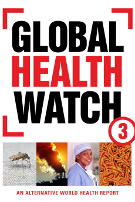Intervening in Global Health Governance: ‘Counterfeit’ medicines and WHO
By Belinda Townsend
The battle over ‘counterfeit’ medicines in the governing bodies of the World Health Organization is indicative of the broader health crisis of neoliberal globalization, which is in focus in the Global Health Watch 4 chapter WHO reform: for what purpose?
Conflict over definitions, terminology and the governance response to the public health problem of fake and substandard medicines reflects underlying tensions over the role of WHO in global health governance, the influence of transnational corporations on global health, power imbalances between high and low income states, and the influence of ideas and discourses in this domain.
At the core of this issue is the use of the term ‘counterfeit’ to refer to the public health problem of fake and substandard medicines. Since the mid-1990s, ‘counterfeit’ has been defined in the World Trade Organizations’ Trade Related Aspects of Intellectual Property Rights agreement (TRIPS) as the infringement of intellectual property. The emergence of the term at the WHO to refer to a separate issue of poor quality and fake medicines reflects a strategy of the international pharmaceutical industry and its proponents to conflate the two issues.
The chapter in Global Health Watch 4 WHO reform: for what purpose? traces the emergence of the ‘counterfeit’ debate with the rise and fall of the WHO’s role in the International Medical Products Anti-Counterfeiting Taskforce (IMPACT), an institution that served to conflate the problem of fake and substandard medicines with the enforcement of intellectual property through the counterfeits discourse. While a group of LMICs forced the removal of WHO from IMPACT in the late 2000s, the conflation has continued to plague the organisation. Despite the objections of a group of South East Asian and Latin American countries over the use of the term ‘counterfeit’, including at the recent 136th meeting of the Executive Board, other member states have fought to maintain the term. As an example of civil society intervention, the People’s Health Movement has delivered several statements to the governing bodies, calling on states to drop the term counterfeit from the organisation.
In contrast to the IP agenda, several LMICs have also emphasised the need for accessible and affordable good quality medicines and strong public health systems to address the problem of fake medicines. At the recent EB, a group of countries suggested a study to investigate the links between access to medicines and medicine safety. The problem of lack of access to affordable good quality medicines is likely a significant factor in the procurement of cheap fake medicines in many countries – and is all the more reason for states to consider IP policies that are more balanced in the public interest.
The failure of WHO to respond to the problem of fake and substandard medicines is in part the result of the longstanding donor freeze on assessed contributions to the organisation. As explained in GHW4, in the early 1990s the United States pushed for a freeze on assessed contributions from states. Since then the WHO has increasingly relied on voluntary funds from donors, which are often earmarked for specific purposes. This has led to a situation in which the WHO has not been able to adequately support low and middle income countries to build their national regulatory capacities to address the problem of fake and substandard medicines. Thus, while the African Union and Eastern Mediterranean member states again called for WHO assistance at the recent EB, a group of South East Asian states pointed out that the nature of voluntary funding continued to place the new work plan at risk of donor distortions. Funding for work against fake and substandard medicines must be secured from WHO’s regular budget to enable WHO to respond impartially to member states’ needs. This must mean addressing the problem of donor dependence and lifting the freeze on assessed contributions.
- Login to post comments




